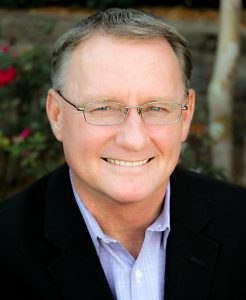
When did you make the decision to take FNA virtual?
Our Executive Committee has been meeting weekly since April when COVID-19 really started to take shape. We were tracking trends because we knew that Furnaces North America is our marquee event. It draws about 1,800 people, so we wanted to make sure we made the right decisions. We needed to make sure we did the right thing for the safety of the people coming to that meeting — both for exhibitors and attendees. We monitored it, and we really tried to do everything possible to meet live because everybody loves that in-person connection.
In early July, the Board met and decided to move the meeting to a virtual environment, and we’re excited about this. Never in the history of heat treating has anyone experienced a digital event like this.
Typically, only about 1 percent of the industry attends a heat-treating trade show. Now, one of our biggest benefits is that we’re going to be able to reach out and touch, through every computer screen, 100 percent of the industry with a trade show and virtual sessions. We’re very excited about the opportunity to build an incredible experience; giving people a chance to receive relevant content, learn about industry trends, see product demonstrations, and take in the latest in technology that suppliers are bringing to the marketplace — all from your computer.
Was it difficult to make the shift?
It was. Mainly because we actually surveyed every attendee that ever came to FNA, plus the MTI members. It’d be easy if it was 90 percent of the people saying they would attend a live event or 90 percent saying they would want to do a virtual event because of COVID, but it wasn’t that easy; 60 percent were one way and 40 percent the other way.
What you don’t want is to do a big trade show for exhibitors, and they spend a lot of money to set up and be there with the equipment, and then you have a lackluster crowd because of COVID.
Were some of the events easier than others to transplant to a virtual environment?
If you’re only hosting conference sessions, it’s easy to do, but when you want to implement a networking environment, it becomes a fairly complicated element.
What steps have you taken to make the experiences as personal as possible?
There are three things people look for in a conference like this: They’re looking to get connected with other attendees. They’re looking to get all the good content they can by interacting with a speaker, and they’re looking to see the best technology they can from an equipment standpoint. Visitors are going to be able to search by category or search by keyword. You can type in “calibration” in the exhibit hall area, and every company that offers calibration — whether it’s equipment or service — is going to come up.
You can click on booths. The booths you’re going to see look like the booths in a live scenario.
In that booth, you’re going to be able to look at technical and marketing documents. You’re going to be able to click on product demonstrations the exhibitors would have performed via video, but here’s the fun thing: You’re going to be able to click on an area called “booth staff” that will list up to 10 people in the booth area. You’ll be able to see them online, waiting for you. You can click on that person, and you can invite them to chat, do an audio call, or even a video call online.
There are going to be four live conference sessions and 35 technical sessions that have been pre-recorded by the session presenters. It’s tough to present to your audience while questions are put in the chat box because you get distracted, and you end up answering questions instead of presenting. Since presentations are pre-recorded, during the presentation, you can ask the presenter questions as he’s presenting. The presenter’s going to be freed up to answer those questions right away. It’s a very cool experience, and we’re excited to give attendees the chance to connect with the experts.
In the Networking Lounge, you’ll find people chatting about issues. There’ll be an exhibitor chat box. There’ll be a session chat box and then, the general FNA chat box. You can chat with the entire group, or you can invite up to 10 people into a group video chat. You’ll be able to meet and greet people just like you would in person.
What can attendees expect that might not have been possible in an in-person format?
We’ve got a special “Bring Your Team” package, where the price for the first two registered is $199, then everybody after that’s only $49. We’re trying to take the financial obstacle out of the equation.
Can people register up until the time of the show?
Absolutely, although the “Bring Your Team” pricing ends September 15.
What have you learned from this experience that you might use in planning the next FNA?
The No. 1 thing I’ve learned is to be prepared for anything, and have a Plan B ready to go and be able to make quick decisions — sometimes, with not all of the information. Furnaces North America is a very systematic operation. It’s done the same way every year with some changes in order to add some excitement to it, but when COVID came along, it taught us that we need to be prepared for the thing we can’t see, so that when it happens, we have a plan in place to make those changes.
MORE INFO www.furnacesnorthamerica.com
























